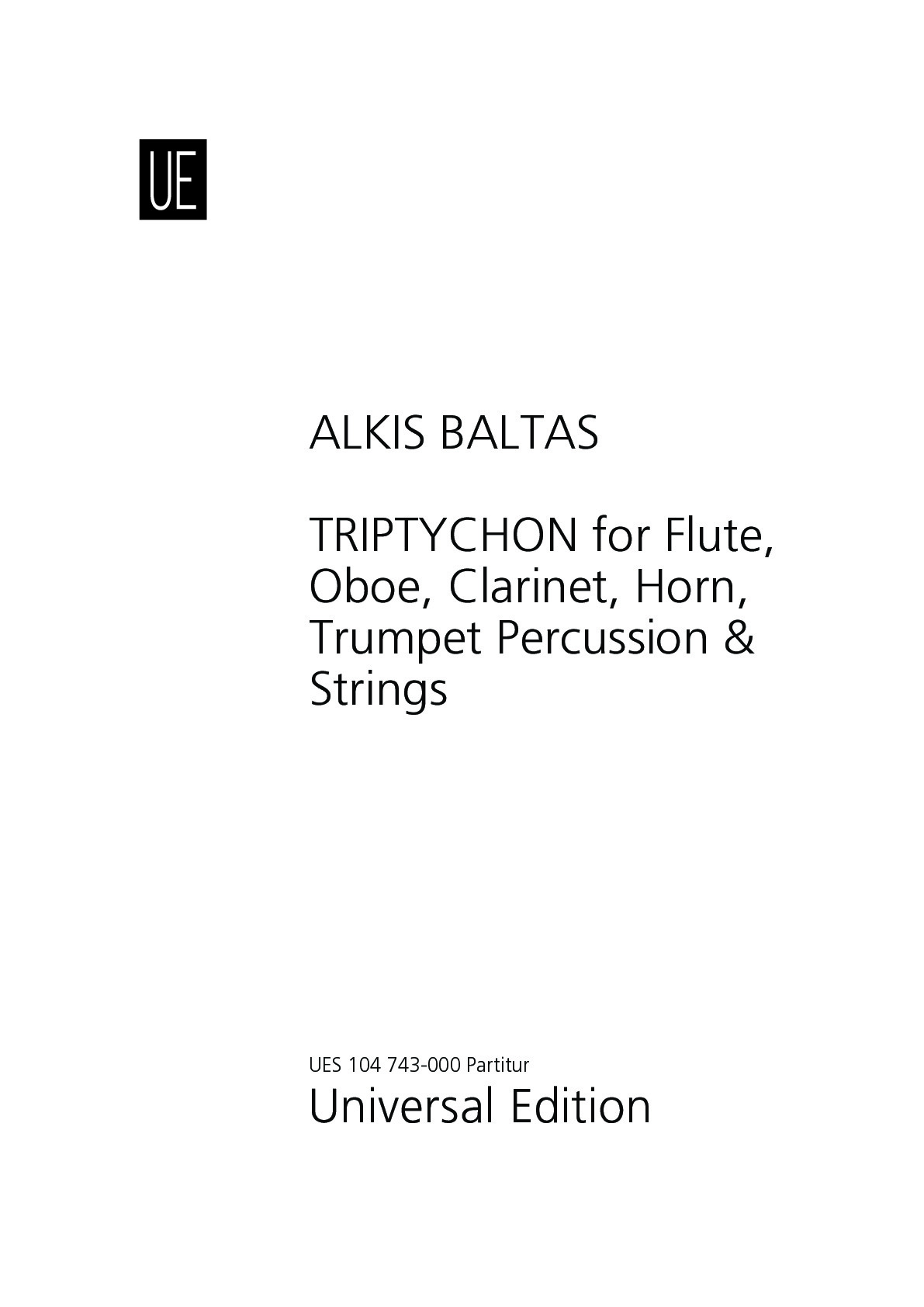.png)
Digital edition
immediately available as PDF
€39.95
Payments:
Shipping:
ALKIS BALTAS
TRIPTYCHON for Flute, Oboe, Clarinet, Horn, Trumpet Percussion & Strings
UES104743-000
Type: Dirigierpartitur
Format: 210 x 297 mm
Pages: 140
Digital edition
immediately available as PDF
€39.95
Payments:
Shipping:
Description
Triptychon
The piece was written in Berlin in 1978 upon request of a German company which was celebrating 100 years of its founding.
With the conductor also being the composer, the piece was presented in 1978 in Berlin by an orchestra consisting of members of the Deutche Oper Berlin.
In Greece, “Triptychon” has been performed by the Athens State Orchestra, the Thessaloniki State Orchestra and the Greek Radio Symphony Orchestra. It was recorded by the Orchestra of Colours.
The composition has three parts.
1) In the first part (Allegro moderato) the first theme is presented by the flute, followed by its extensive elaboration.
After a short bridge in which a solo clarinet is heard, the second theme (Poco meno) follows the elaboration which is based on contrapuntal techniques, mostly those for passacaglia and canon. Consequently, the first theme will recur and the part will close with an epilogue (coda) based on both previously heard themes.
2) The music of the second part (Andante) starts only with the strings and continues with the winds. Then, we have its central part, middle section. The dominant technique here is that of passacaglia. Every instrument has a motif element which is repeated continuously. The instruments enter the orchestration gradually and in the same way they make their exit. The solo cello will lead to the next section of this part which is a short recapitulation of the first part with the difference that although now the winds start, only the strings continue. With the entire orchestra performing, this part will lead towards to its quiet ending.
3) In the beginning of the third part (Allegro moderato) a short introduction is heard which quickly leads to the quick main theme (Allegro). After the second time the introductory melody is heard, the second theme follows with intense rhythmic features. Then, the introductory melody and both main themes will be combined with each other and will receive an extensive elaboration.
In the epilogue of the third part (Pesante), the whole orchestra participates. The introductory melody is heard loudly like an enthusiastic praise song.
More information
Type: Dirigierpartitur
Format: 210 x 297 mm
Pages: 140

